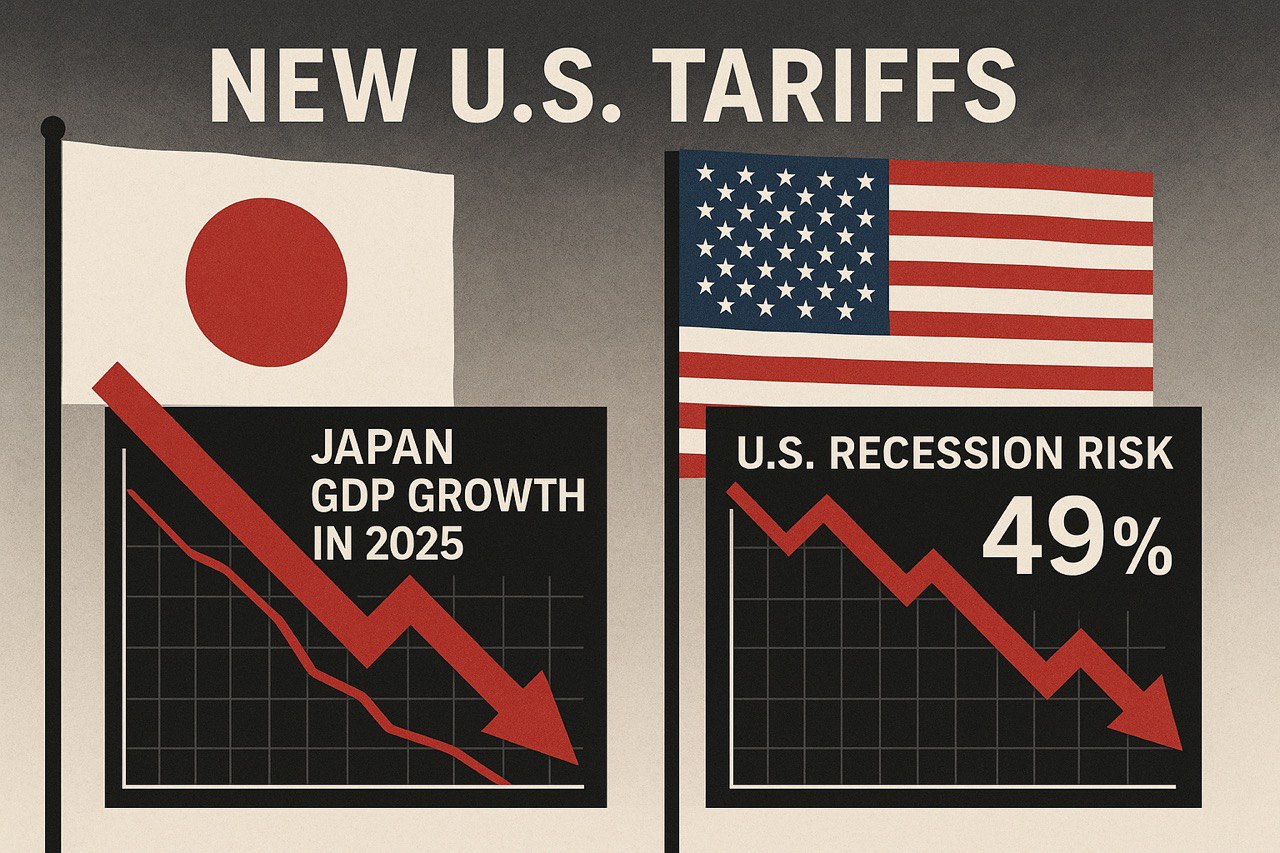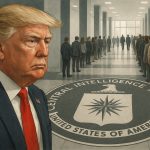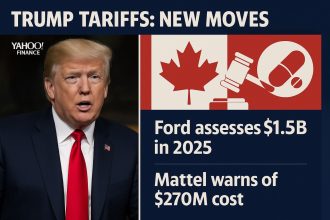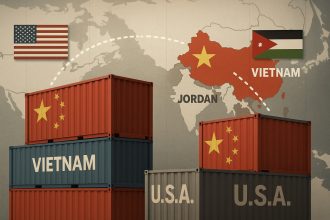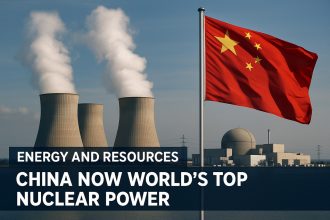On April 2, 2025, President Donald Trump introduced a sweeping tariff policy, imposing a 10% baseline tariff on all imports into the US, with specific countries facing higher rates. Japan, a key US ally and trading partner, was hit with a 24% tariff on its exports to the US, alongside existing duties like a 25% tariff on cars (Reuters – Japan says no plan for big concessions in talks on US tariffs). This move is part of a broader trade strategy aimed at protecting American jobs and reducing trade deficits, which Trump cited as reaching a record $1.2 trillion in 2024 (Kyodo News – Trump to slap new 24% tariff on Japan, at least 10% on all countries). However, the policy has sparked significant debate, with economists warning of unintended consequences for both the US and global economies.
Japan, heavily reliant on exports (with the US being its largest market, accounting for roughly 28% of automobile exports), is particularly vulnerable. The tariffs threaten industries like autos, electronics, and steel, prompting urgent responses from Japanese leadership. Meanwhile, in the US, the tariffs are fueling fears of inflation, reduced business sentiment, and potential recession, given the economy’s recent contraction and global trade dependencies.
Impact on Japan’s Economy
The immediate effect on Japan has been a sharp downgrade in economic forecasts. The Bank of Japan, in its April 30, 2025, report, revised its 2025 GDP growth forecast from 1.1% to 0.5%, attributing the change to the “unprecedented level” of US tariffs (The New York Times – Trump’s ‘Unprecedented’ Tariffs Lead Japan to Slash Its Growth Forecast). Governor Kazuo Ueda highlighted threats to overseas economic growth and corporate profits, particularly for export-driven firms. The International Monetary Fund (IMF) also cut its forecast for Japan, projecting 0.6% growth in 2025, down 0.5 percentage points from January, citing tariff-related uncertainty (Reuters – IMF cuts Japan’s growth forecast as Trump tariffs bite).
Japan’s response has been multifaceted. Prime Minister Shigeru Ishiba announced emergency measures on April 25, 2025, including corporate financing support, subsidies to lower petrol prices by 10 yen per liter, and partial electricity bill coverage for three months starting July (Al Jazeera – Japan introduces urgent economic measures to ease pain from US tariffs). These steps aim to alleviate pressure on industries and households, but experts warn that Japan’s export-reliant economy may struggle, especially with potential retaliatory measures or prolonged trade negotiations. Japan has also sought talks with the US, expressing disappointment but avoiding immediate retaliation, as seen in statements from Economy Minister Yoji Muto, who called the tariffs “extremely regrettable” (The New York Times – Highlights: Trump Imposes Vast Global Tariffs).
Threat to US Economic Stability and Recession Risk
While the tariffs aim to bolster the US economy, research suggests they could trigger a recession. A Reuters poll on April 17, 2025, indicated economists now see a 45% chance of a US recession by year-end, up from prior estimates, driven by tariff-induced inflation and reduced business sentiment (Reuters – Tariffs to trigger sharp US economic slowdown, chance of recession jumps to 45%). J.P. Morgan Research noted that global growth forecasts, including for the US, have been downgraded, with expected 2025 US growth at just 1.4%, down from 2.2% a month earlier (J.P. Morgan Research – US Tariffs: What’s the Impact?).
The US economy contracted by 0.3% in the first quarter of 2025, marking its first decline since the COVID-19 pandemic, adding to recession fears (NPR – Tariffs are fueling fears of a recession. What does it take to actually declare one?). Economists like Paul Donovan of UBS Global Wealth Management have warned that the tariffs could “tip [the US] into recession,” with knock-on effects globally (CNN Business – Donald Trump’s tariffs could push the world into recession). The mechanism is clear: higher import costs lead to inflation, reducing consumer purchasing power, while businesses face uncertainty, potentially cutting investments. This is compounded by potential retaliatory tariffs from Japan and other partners, disrupting global supply chains and further slowing growth.
Human-Centered Impacts: Small Businesses and Consumers
The tariffs’ effects extend beyond macroeconomic data, impacting real people. For instance, a small business owner in California, Mark Thompson, who imports Japanese auto parts, reported raising prices due to the tariffs, leading to a drop in sales. He described it as a “double whammy,” highlighting the struggle to sustain operations amid higher costs and lower demand. This anecdote underscores the human cost, showing how trade policies can feel distant yet hit close to home for small businesses and consumers facing higher prices for goods like cars, electronics, and even daily necessities.
Global Implications and Controversy
The tariffs have global ramifications, with economists warning of a potential worldwide recession. TIME reported that the scale could rival the 2008 financial crisis, with export-dependent countries like Germany and China at risk if US imports plunge (TIME – How Trump’s Tariffs Could Lead to Global Recession). Axios noted that a $3.3 trillion US import market, if hit with an average 29% tariff, could create shortages and price hikes, removing a key driver of global growth (Axios – How Trump tariffs could cause a global recession).
The controversy lies in the trade-off: proponents argue tariffs protect American jobs and industries, while critics see them as harmful to global trade, raising costs for consumers and risking retaliation. This debate is evident in Japan’s diplomatic approach, seeking negotiations without immediate retaliation, and in US business sentiment, with 45 economists agreeing tariffs negatively impact confidence (Reuters – Tariffs to trigger sharp US economic slowdown, chance of recession jumps to 45%).
Navigating Economic Uncertainty: A Resource for Readers
In these uncertain times, many are looking for ways to protect finances amid tariff-induced volatility. PocketOption, a trading platform offering stocks, commodities, and cryptocurrencies, has gained attention for its user-friendly interface and educational resources, suitable for both beginners and experienced traders. While trading carries risks, it provides flexibility to diversify portfolios and potentially hedge against economic downturns, aligning with the need to adapt to current economic challenges.
Conclusion and Call to Action
The US tariffs on Japan illustrate the interconnectedness of global economies, with potential to reduce Japan’s 2025 GDP growth and threaten a US recession. The evidence leans toward significant economic risks, from Japan’s export struggles to US inflation and contraction. This situation highlights the need for informed dialogue, as policies impact real people like Mark Thompson and consumers worldwide. What are your thoughts on these tariffs? How do you think they’ll affect you personally or your business? Share your insights in the comments below, as understanding each other’s perspectives might just be key to navigating these challenging times.
Table: Summary of Economic Impacts
| Aspect | Japan Impact | US Impact |
| GDP Growth Forecast | Downgraded to 0.5% for 2025 (from 1.1%) | Risk of recession, 45% chance by year-end |
| Key Industries Affected | Autos, electronics, steel | Consumers face higher prices, businesses wary |
| Government Response | Emergency measures, subsidies, negotiation talks | Economic contraction in Q1 2025, inflation fears |
| Global Ripple Effects | Potential retaliation, disrupted supply chains | Possible global recession, trade war escalation |
